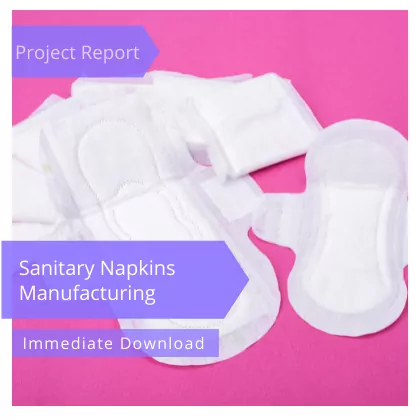Description
You can immediate download the Blood Bags Manufacturing sample project report format template, in pdf format.
These reports will help you prepare a project report as per your objectives. This report will also be helpful in studying the project and gathering information about the project.
Blood bag systems are the foundations for a global blood supply based on traditional blood donation. It is a biomedical device used to collect, store, transport, and transfuse human blood and blood components. These systems contain up to six distinct bags with various functionalities and process more than 90% of all blood donations. A single or more bags are connected with tubing, needles, needle covers, clamps, and other components to form the system. The blood bags are composed of a type of plastic that is compatible with blood.
How to Download Blood Bags Project Report
Table of Contents
Gone are the days waiting at the door of the expert , as a result, get you Blood Bags Manufacturing sample report in hand, now you can instantly download report in pdf format.
First Step – Click add to basket >> Check Out >> Payment
Second Step – Immediately after successful payment, you will get a link to download the report. You can download the report immediately from this link.
Introduction
Blood bags have recently become a visible item and an essential requirement of hospitals and nursing homes to address blood infusion crises. Blood bags ostensibly serve the medical industry at a critical time. The need for blood bags is expanding dramatically as the number of hospitals and nursing homes grows. Biomedical devices used for collecting, storing, transporting, and transfusion of blood and its components are referred to as disposable plastic blood bags. Because of the rising prevalence of blood-related illnesses and technological advancements, the disposable plastic blood bags market is growing rapidly worldwide.
Furthermore, the disposable plastic blood bag market is being driven by an ageing population and increased government activities in the industry. Single blood bag, double blood bag, triple blood bag, quadruple blood bag, and transfer blood bag are the numerous types of disposable blood bags available depending on the demand for blood infusion. The collection tube, needle, needle cover, and clamp are included in a blood bag package. To collect and store blood and blood components, disposable plastic blood bags have replaced glass bottles. Disposable plastic blood bags also aid in separating blood components necessary to treat a variety of blood disorders, such as platelets, plasma, and cryoprecipitate.
Medical and surgical equipment manufacturers all around the world produce a wide range of single-use devices. They are vital for patient care, just like pharmaceuticals and other health technologies, whether at the bedside, in a rural health clinic, or a large, specialised hospital. The main reason for this is infection control; an object that has only been used once cannot spread infectious organisms to subsequent patients.
Market Potential
The expansion of healthcare facilities in India will also help to drive the medical device sector’s growth. Because of ongoing improvements and the increased need for better blood collection technology, the blood bag market is likely to expand in the future years. Because of the rising prevalence of blood-related ailments and the increasing number of traffic accidents that necessitate rapid blood transfusion, the global blood bags market is expected to develop from 2021 to 2025. The CAGR will be 10%. Additionally, government attempts to improve the healthcare sector and an increase in the number of hospitals, blood banks, and other healthcare facilities are propelling the global blood bag market forward. Citizens’ growing awareness of the need for blood donation is driving up demand for blood bags all around the world.
Product, type, volume, material, end-user, and geography are all used to segment the worldwide blood bags market. The market is divided into a single blood bag, double blood bag, triple blood bag, quadruple blood bag, and Penta blood bag based on product. Due to an increase in the number of blood transfusion procedures, greater prevalence of various blood-related illnesses, and their use in plasma collection, the Triple blood bags segment is likely to maintain its dominance.
Technology/ Product Specifications
- Single Blood Bag: Designed for whole blood collection, storage, and transfusion. Contains 63 mL anticoagulant solution CPDA-1.CPD anticoagulant solution is also available. Capacity: 250, 350, 450m. Standard donor tubing and a 16G tamper-proof needle.
- Double Blood Bag: This device aims to separate whole blood into plasma and red cells. Contamination is no longer a risk. A total of 63 mL of CPDA-1 anticoagulant solution is contained in the primary bag.CPD anticoagulant solution is also available. There is no solution in the 300 ml transfer bag. Capacity: 1 x 450 ml + 1 x 300 ml transfer bag. Standard donor tubing and a 16G tamper-proof needle.
- Triple Blood Bag: The purpose of this device is to divide whole blood into three parts: Platelets, red blood cells, and plasma. Red blood cells, leucocytes & plasma. A total of 63 mL of CPDA-l anticoagulant solution is contained in the primary bag.CPD anticoagulant solution is also available. There is no solution in the 300 ml transfer bags. Transfer bag with SAG-M solution/5 days platelet storage (optional). Capacity: 1 x 450 ml + 2 x 300 ml transfer bags. Standard donor tubing and a 16G tamper-proof needle.
- Quadruple Blood Bag: created to separate whole blood into four parts: Red blood cells, platelets, plasma & cryoprecipitate. Red blood cells, platelets, plasma & leucocytes. A total of 63 mL of CPDA-l anticoagulant solution is contained in the primary bag. There is no solution in the 300 mL transfer bags. Capacity: 1 x 450 ml + 3 x 300 ml transfer bags. 1 x 450 ml bag with CPD solution, 2 x 300 ml bags with no solution and 1 x 300 ml bag with 100 ml SAG-M solution are also included in the system. Standard donor tubing and a 16G tamper-proof needle.
- Transfer Bag: Specifically designed to transport specific blood components from whole blood. There is no anticoagulant solution in this product. Capacity: 300 ml.
Industrial Scenario
Because of the increased demand for sterility issues, storage, transfusion, and transportation of blood and its components, Asia-Pacific is likely to lead the blood bags market in the following years. The region is also witnessing rapid expansion, particularly in the healthcare sector, with hospital and health clinic construction on the rise, which is expected to positively impact the market through 2025.
The COVID-19 epidemic is negatively influencing the blood bag market, as an increasing number of people are becoming cautious about donating blood because of the virus’s spread.
Product Uses
Blood bags are used for storing, collecting, transfusing, and transporting blood and blood components such as RBCs, WBCs, and platelets. They help keep the blood from coagulated and becoming contaminated. However, the hazardous waste generated by the excessive use of blood bags may prove to be a stumbling block to the market’s growth in the upcoming years. Furthermore, governments’ strict regulation of healthcare procedures and services is expected to stifle market expansion.
Raw Material Required
- PVC Resin
- Additives
- Polycarbonate
- Poly Propylene
Manufacturing System
The following subsystems are involved in the manufacture of the bags.
- Compounding: Plasticisers, stabilisers, lubricants, and other chemicals are mixed into the PVC substance. Bags and tubes are made from the formulation.
- Extrusion: To turn the plasticised material into sheet form, the compounded PVC is extruded through a die. After slitting, the extruded sheet is trimmed to the desired size and transferred to the welding area. PVC composites are extruded to create the donor and transfer tubing. The tubes are then printed and trimmed to length in line before being sent to the welding department.
- Injection Moulding: Injection moulding is used to make components such as the transfusion port, needle cover, and clamp. The parts are cleaned using ultrasonic and dried in a drying oven. The needle is securely fastened to the needle holder.
- Welding: The bags are made using a technique known as high-frequency welding. Between the electrodes, sized PVC sheets are inserted, and a high frequency at a high voltage is delivered. PVC heats very quickly, causing the electrodes to seal together. The bag is then welded together with the transfusion ports, donor, and transfer tubing to form an integrated element of the blood bag system. Bags that have been welded are trimmed. The tubing is secured with clamps and needle covers. The accepted bags are sent to the labelling area once they have been inspected.
- Preparation of Anticoagulant Solution: The anticoagulant components are combined, and the solution is made in pyrogen-free distilled water. GMP carries out all operations. The bags are loaded with anticoagulant solution.
- Sterilisation: The bags are sterilised in a steam autoclave.
- They are done at this Inspection: Particulate particles, leaks, and other apparent faults are eliminated during the 100% inspection step. Following that, the examined bags are cartooned and placed in the foil pack.
Steps involved in Blood Bag Manufacturing Process
- The full automatic bags manufacturing line, which is equipped with computerised shuttles that perform all assembly procedures, is at the heart of the lines. In summary:
- The calendared PCVC film (non-collapsible) is perpetually welded to the pipes using a piece of high-frequency welding equipment.
- The bags are delivered to the autonomous shuttle by an operator.
- Another operator supplies the essential components for the bags to the various stations (needles, pre-donation bags, connectors, etc.).
- When using KITS (double/triple bags), each operator places the bags on a shuttle transporting them to the next assembling station.
- Anticoagulants (25 – 45 mL each, depending on formulation) are then filled in bags.
- Unique labels are applied to the bags using an automatic labelling system.
- Overwrapping in special aluminium foils is done with vacuum overwrapping equipment. An operator inspects the bag quality before loading it into the overwrapping trays.
- The overwrapped bags are then placed on the autoclave trays and sterilised using a semi-automated method.
Key Points Cover in Sample Project Report
Table of Contents
| Sr. No. | Particulars |
| 1 | Purpose Of The Document |
| 2 | Introduction |
| 3 | Market Potential |
| 4 | Industrial Scenario |
| 5 | Product Description |
| 6 | Product Uses |
| 7 | Raw Material Required |
| 8 | Manufacturing Process |
| 9 | Indian Standards |
| 10 | Project Components |
| 11 | Land/Civil Work |
| 12 | Plant And Machinery |
| 13 | Power Requirement |
| 14 | Manpower Requirement |
| 15 | Other Utilities |
| 16 | Licences |
| 17 | S.W.O.T Analysis |
| 18 | Cost Of Project |
| 19 | Means Of Finance |
| 20 | Projected Balance Sheet |
| 21 | Projected Profitability Statement |
| 22 | Cash Flow Statement |
| 23 | Calculation Of D.S.C.R |
| 24 | Computation For Blood Bag Manufacturing |
| 25 | Computation Of Sale |
| 26 | Closing Stock |
| 27 | Computation Of Working Capital Requirement |
| 28 | Depreciation |
| 29 | Repayment Schedule Of Term Loan |
| 30 | Financial Indicators |
| 31 | Profitablity Ratios With Graphs |
| 32 | Break Even Point Analysis |
| 33 | Implementation Schedule |
| 34 | Assumptions |
Apart from this, all the information is being provided. To help in preparing project reports.
CONCLUSION
The blood bag market is expected to develop at a CAGR of 10% from 2021 to 2025 shows the demand for blood a bag has increased. Many people with susceptible immune structures are inflamed with the aid of using COVID-19 and hospitalised, and lots of requiring a blood transfusion. As a result, the call for blood bags and the device has risen following the pandemic. Many governments are also taking tasks to assist growth blood donation. As a result, the call for blood bags is predicted to boom.
Additionally, government authorities’ tasks are predicted to reinforce the healthcare sector. Moreover, the growing number of hospitals, blood banks, and different healthcare facilities are riding the boom of the blood bags market worldwide. The developing consciousness approximately blood donation amongst residents is likewise propelling the demand for blood bags worldwide. This states that starting such a business these days will be helpful and give you profit in the upcoming years.
FAQs
WHAT ARE BLOOD BAGS?
These are disposable biomedical translucent flexible polyvinyl chloride (PVC) containers for collecting, processing, and storing whole blood and blood components in hospitals.
Explain parts of the blood bag system?
The blood bag system comprises a blood donor bag, a donor tube (which includes a needle and a needle cover), a puncturable and non-sealable transfusion pot, and a clamp.
What is the most commonly used anticoagulant in blood bags?
CPDA: Citrate Phosphate Dextrose Adenine
What are the uses of the ingredients in the blood bag?
- Citrate– acts as an anticoagulant by chelating calcium.
- Dextrose- needed for the metabolism of stored red blood cells.
- Phosphate- reduced acidity and increased 2,3 DPG and red cell phosphate concentrations.
- Adenine- Red blood cell viability is improved.
How are the blood bags stored?
Blood units should be stored standing erect in baskets or lying flat on a shelf after collection. The bags should never be packed too tightly, and they should never be kept near the freezer compartment or in the refrigerator door.
Which countries and companies are involved in the Disposable Plastic Blood Bag market?
The major countries covered in the Disposable Plastic Blood Bag market are:
- North America
- Asia-Pacific
- Europe
- Latin America
- The Middle East and Africa
The major key players at the world level are:
- TERUMO
- Weigao
- Fresenius
- Grifols
- Haemonetics
- Macopharma
- JMS
- Sichuan Nigale Biomedical
- Suzhou Laishi Transfusion Equipment
- Nanjing Cell-Gene Biomedical
- AdvaCare
- SURUZ
In India, which companies are manufacturing Blood bags?
Indian companies involved in this business are:
- Hindustan Latex Limited
- SHRI SADGURU DIAGNOSTICS
- Pratik Trade Lines
- HLL Lifecare Ltd
- ASIAN CONSUMABLES INDIA PVT LTD
- Poly Medicure Limited
- J Mitra & Co PVT Ltd
- HLL Lifecare Ltd
- Eastern Medikit Ltd.
What is Global Blood Bags Market size in 2026?
In 2026, the global blood bags market is expected to be worth USD 711 million.
Which region has the highest growth rate in Global Blood Bags Market?
Asia Pacific is growing at the highest CAGR over 2021- 2026.
Sample Project Report Format
In our project report format, we cover technology details, its diagrams, flow chart etc. as and when required or deemed fit to include. Also, prepare in-depth financial calculations which is necessary for the Investor/bank.
You will get the report data Blood Bags Manufacturing Business in PDF or MS word. Which you can use easily. You can also modify the information according to your need. You will be able to access the data easily according to the your requirement. Additionally you can easily convert the data to PDF format.
Also Buy :-
Disposable Plastic Syringes Project Report
Hospital Sample Project Report Format
Surgical Adhesive Tapes Project Report
Plastic IV Bags Project Report
Surgical Gloves Project Report
For whom are these formats useful?
- CA Chartered Accountants
- Tax Consultants
- Small Business Owners
- Students
- Engineers
- Who want to self study
In addition to those who want to prepare project reports themselves.



